- By Steve Winski
- January 15, 2020
- Operations & Management
Summary
Fast Forward
- Traceability in the food and beverage industry enables manufacturers to eliminate human error, improving efficiencies and increasing productivity.
- Complete coding management and packaging verification solutions are insurance against coding and packaging errors.
- With a modular sensor and software solution, manufacturers can ensure their products will leave the factory in the right packaging with the correct label and coding information.
Systems combine to better monitor and control product and packaging
By Steve Winski 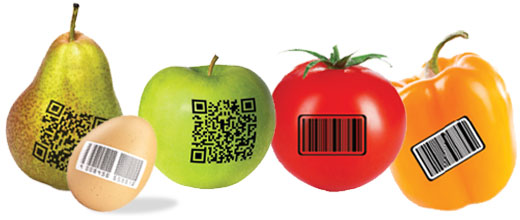
As food safety becomes more and more a concern, the ability to track products within a facility is of vital importance to manufacturers and consumers. In 2018, the Food and Drug Administration (FDA) reported 137 product recalls due solely to misbranding and undeclared allergens. These are all classified as Class 1 recalls where, under FDA regulations, there is a significant risk to health.
Not only do these recalls have significant consequences to public health, they also put companies at risk. A Deloitte study on recall execution effectiveness estimates that a food recall can cost a company up to 10 million dollars. In addition, a company’s stock price can decline up to 22 percent within two weeks after a recall is announced.
As consumers demand more accurate and clear information on purchased products, it is up to manufacturers to improve packaging, labels, bar codes, date codes, and even nutritional and allergen information. One answer to this is a continued focus on traceability, which is a challenge many food and beverage companies face. When you know where your product is and what is happening around it at all times, you are able to better control the environment surrounding it and avoid potential waste, rework, and even product recalls.
And though traceability is a primary end goal for many food and beverage companies, accomplishing it is not always easy. Many companies have track and trace systems in place that monitor and control packages and products, but they are often incomplete. The solution to this is finding a more comprehensive software and sensor solution to provide a complete package and product monitoring and control system to track and trace products throughout the facility.
What causes labeling and packaging errors
With the increasing complexity of packaging types, it has become more challenging for food and beverage manufacturers to reduce, if not eliminate, errors in coding and packaging products. This is particularly important in situations where mistakes can cause a risk to consumer health.
Errors in the packaging process happen for a number of reasons, but many of these errors are human error. For example, the wrong date code being entered into the printer can cause waste and rework.
One of the more common mistakes is because of the frequency of artwork changes and promotional offers. It is increasingly difficult for manufacturers to eliminate errors on packaging lines because of the sheer number of products being produced in different packages, especially when temporary promotional packaging is implemented. When the incorrect packaging is selected, the entire batch needs to be scrapped, producing significant waste.
Other errors can occur from the printer or coder. A coder may fail to print, or a printer may print a poor-quality code that is illegible and needs to be redone. Although eliminating these errors may seem impossible, it is really easier than you might think. When you catch these errors early, you can avoid significant production losses in time and money.
“One simple mistake on packaging lines can result in huge commercial damage to your business: both in financial loss and damage to brand and customer confidence,” said Mike Hughes, managing director of AutoCoding Systems. “Even if you are lucky enough to identify an error before it enters the distribution chain, it’s likely that you will still incur significant rework or scrap costs to rectify the problem. And there’s an added risk of shorting customer deliveries on shelf-life critical products.”
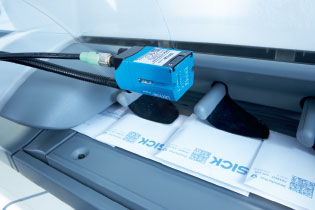
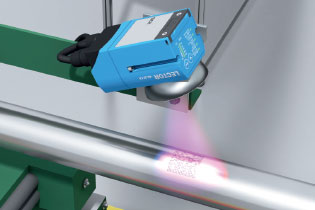
Taking steps to remove human error
Sensor solutions play a large role in the production of food and beverage products. In basic track and trace systems, sensors are needed to identify one- and two-dimensional codes, read and write to radio frequency identification (RFID) tags, and provide high-resolution images for downstream processes.
The most common solution used in these systems is bar-code readers—used primarily to identify markings and codes on packages. But a track and trace system goes beyond just bar-code readers. It also encompasses vision solutions, Ethernet, software databases, and more. Greater functionality is possible when using a comprehensive software database that connects with sensor technology.
Complete coding management and packaging verification solutions are insurance against potential coding and packaging errors. You will gain increased speed, reliability of line setup, and reduction in job changeover time.
Modular sensor and software products can eliminate the risk of coding and packaging errors that can lead to emergency food recalls. When implemented on packaging lines, companies can effectively manage the deployment of coding and data and the checking of packaging before products leave the factory.
Essentially, software verifies that all coding data and packaging is correct. Vision sensors then verify that the correct code was used and that it actually printed, helping to validate codes and prevent recalls for food safety before products leave the facility. This leads to increased traceability and accountability for food and beverage manufacturers.
By catching mistakes at the source, significant changeover delays or rework to recode or correct the packaging are avoided entirely. With these types of solutions, you gain better control over your packaging line and the integrity of your products.
Job setup and changeover time is also dramatically reduced. When manually setting up a packaging line, it can take up to 15 minutes, with quality paperwork adding another five minutes. This 20-minute time frame can be reduced down to one minute or less with a comprehensive solution such as this.
“By automating the setup of your coders and other packaging line devices, potentially to the point where you can receive instructions directly from your ERP [enterprise resource planning] or MES [manufacturing execution system], you save on downtime and reduce the number of repetitive, low-value tasks your staff would otherwise carry out on a day-to-day basis,” Hughes said. “It’s also important to have the option to build on your chosen solution’s core functionality to add features like OEE [overall equipment effectiveness] reporting, paperless quality control, inspection reporting, and more.”
Control the packaging line
To keep up with a changing business environment, new technology, and demanding consumers, food and beverage manufacturers are acknowledging that automation must play a significant role in their factories to improve efficiency and reduce costs. As such, the need for equipment connectivity on the factory floor has never been more prominent. For equipment and applications to work together with minimal human intervention, they need to be able to communicate, share data, and report back on performance and quality.
A modular sensor and software package is very effective at helping to meet a retailer’s code of practice related to coding and packaging verification. However, there are additional capabilities that can be rolled into packaging lines for process improvement reasons, not just for compliance reasons.
Information relating to a product (i.e., date coding rules, packaging artwork, bar codes, coding profiles) can be entered into a secure database, thereby allowing validation before use. The stored data is used to set up and control the relevant devices on the packaging line. This removes the need for operators to program the devices and, in turn, removes the risk of human error.
However, one challenge with some of these systems is they may require the use of a single manufacturer’s “networking systems.” What is needed is a solution that works well with all equipment typically found in a packaging line. This means you will not have to make costly changes to your packaging line just to get it implemented but can use a single system to control multiple devices from different vendors. The devices may perform different functions—coding, inspection, labeling, and verification—but they all exist on the same line. So, for your convenience, you want to be able to control them easily.
With a system like this, you can set up and control all types of packaging line equipment, including multiple brands of printers, labelers, checkweighers, metal detectors, and x-ray equipment. This increases your traceability throughout the facility, as everything can remain connected, regardless of the supplier.
In addition, an automatic solution should manage the entire packaging workflow process. From making artwork changes in the system database to equipment setup to retrieving product information from the database, you want better access to all data on your packaging line so you can make better decisions to remain competitive.
A complete solution like this gives the consumer goods industry a way to greatly reduce date-coding errors and downtime related to product changeovers. You will have dynamic control of your packaging line, ensuring that it stops if a device malfunction is detected or if there are too many misreads or no-reads detected from a sensor.
Add modules for functionality
Any automated system should be scalable with the potential to add additional functionality as required. A modular sensor and software solution can provide additional features that address very specific challenges manufacturers face.
Extensive reporting is available from inspection devices like checkweighers or metal detectors to provide access to more data on your packaging line. You can also receive line performance reporting to capture real-time manufacturing data with accurate reports. These reports display your packaging lines, devices, and product performance. This helps improve your overall equipment effectiveness to drive gains in throughput and efficiency to increase profitability.
Additionally, a pallet labeling system is available for auditable and controlled labeling of pallets from different lines with information like batch code, order ID, line ID, stock keeping unit (SKU), and SSCC18 (serial shipping container code) information.
Better reporting allows for more effective coding automation and the automatic generation of batch codes and best by dates. This all drives line availability and improves the overall packaging process.
Finally, you can make your quality control process paperless. Digitizing quality checks allows you to incorporate in-line and off-line quality control processes into a workflow control. Data is then recorded in the audit trail to utilize electronic reporting.
“A purely manual, paper-based system is becoming challenging for many manufacturers to maintain. The general trend is that these compliance-driven requirements are becoming more detailed and prescriptive,” Hughes said. “The audit regime, particularly if your business manufactures on multiple sites for multiple retailers, can become exhausting. One group technical director recently told us that on average, one of his sites is being audited somewhere, for something, every couple of days.”
With a paperless system, product traceability is at an all-time high. Information becomes available to anyone in the system, instead of just those who have access to the paper.
Packaging line problems
A modular sensor and software system that can verify packaging and coding issues has value in many different industries. In one instance, a major global manufacturer of pet food required a solution that would address a number of issues it was experiencing.
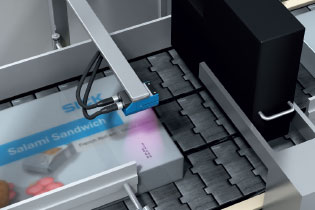
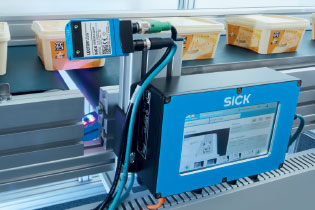
USER EXAMPLE: Print correct date codes
The manufacturer’s main pain points were printing the wrong date code on products, not printing date codes on products, and selecting incorrect primary and secondary packaging for the products. As a result, it looked to a modular solution for software and sensors to solve all of these problems.
A multitouch human-machine-interface was implemented, using a hand scanner and RFID reader for user login. This gave operators a robust and reliable interaction point with the system. In addition, the software faithfully eliminated coding and packaging errors.
On the company’s primary packaging lines, secure deployment of the expiration date and other data was sent to the coders. The printer is automatically set up with the correct coding information. The line also stops entirely if the printer goes into a fault state.
The sensors on the system detect whether or not a code is present. If one “No Read” is detected, it will reject the product, but not stop the line. If more than three “No Reads” are detected, the entire line will stop until the problem is fixed. This means the company can get ahead of the problem before it results in significant waste and potential recalls.
For packaging errors, a verification process was put in place. Expiration dates and other data is sent to the carton printers. Sensors verify correct packaging using inline checking of bar codes. They also verify that the correct code is placed on the box.
USER EXAMPLE: Identify similar packaging
In another example, a major prepared meals company needed to differentiate between products with similar packaging. The company manufactured a number of different soups and sauces, all of which used very similar packaging. As a result, incorrect pots were often used with products. In addition, numerous product changeovers led to increased downtime while waiting to manually set up the equipment.
All this was solved with a modular approach. Various bar-code scanners now scan every spinning soup pot to confirm the correct one is being used. Expiration dates and other data are sent to the printers and then verified by sensors. Packaging errors were greatly reduced, if not entirely eliminated, and the system was better able to accommodate the various product changeovers, leading to increased uptime.
USER EXAMPLE: Prevent incorrect labels
Another company utilizes a modular system to ensure the correct labels are used for each product. The company uses similar packaging for all products, but each product type needs a different side label, top label, and bottom label attached. Because the packaging and each individual product look very similar to one another, the manufacturer was running the wrong labels on packaging.
When this happened, the entire line had to stop and then workers needed to backtrack and find where the incorrect labeling started. It took a significant amount of time to retrace the problem to where it started. The manufacturer was fortunately able to save the product, but workers had to remove the incorrect labels and run them down the line again to replace them. To avoid high labor costs for quality control, the company decided on a vision sensor and software package that more reliably detects mistakes and avoids rework.
Future-proof traceability
Packaging and coding mistakes account for a high proportion of food product recalls, having a devastating impact on food manufacturers’ brand and business costs. Taking appropriate measures to prevent such a recall has to be a priority for food and drink suppliers.
With a modular sensor and software solution, manufacturers can ensure their products will leave the factory in the right packaging with the correct label and coding information. This comprehensive package and product monitoring and control setup can eliminate these errors.
Additionally, by automating the setup of printers and other packaging line devices, with the potential to link directly to an MES or ERP system, there is a significant reduction in job setup and changeover time. By reducing downtime, the packaging line can run for longer periods with improved efficiency and increased productivity.
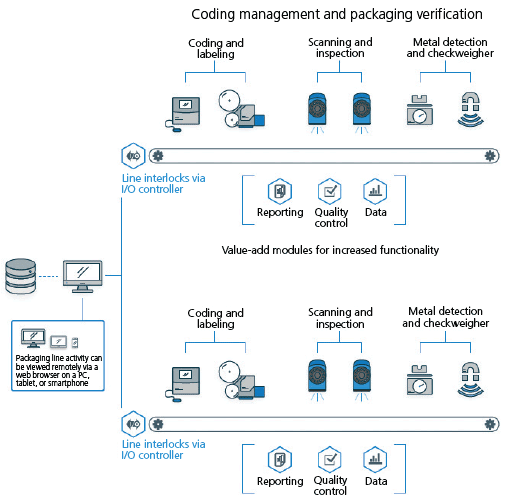
Reader Feedback
We want to hear from you! Please send us your comments and questions about this topic to InTechmagazine@isa.org.


